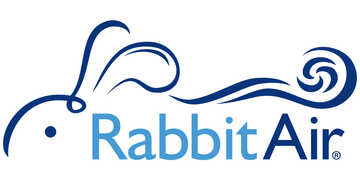
A quiet HEPA air purifier is generally safe for babies and can provide cleaner air, but choose the model carefully with the sound level in mind. Rabbit Air purifiers are designed to be ultra-quiet and produce no more noise than a whisper.
|
Name |
Noise Level |
|
Rabbit Air A3 SPA-1000N |
20.3 decibels |
|
Rabbit Air BioGS 2.0 SPA-550A |
22.8 decibels |
|
Rabbit Air MinusA2 SPA-780A |
25.6 decibels |
|
Whisper |
30 decibels |
While these devices can contribute to a cleaner and more hygienic environment by trapping pollutants and allergens, a common concern with some air purifiers is whether they produce too much noise for a baby's sensitive ears.
In this article, we’ll explore whether an air purifier can be too loud for babies and offer guidance on choosing a model that balances effective air purification with a serene environment.
Understanding Air Purifier Noise Levels
Air purifiers come in various types and sizes, and their noise levels can vary significantly. The noise produced by these devices is measured in decibels (dB), with lower numbers indicating quieter operation.
Typically, air purifiers generate noise ranging from 20 dB to 60 dB. To put this in perspective, a whisper is around 30 dB, while normal conversation is about 60 dB.
For a nursery, especially where a baby’s sleep is paramount, it's important to choose an air purifier that operates on the quieter end of this scale.
Impact of Noise on Babies
Some babies are particularly sensitive to noise, and disturbances can affect their sleep quality and overall comfort.
Prolonged exposure to loud or disruptive sounds can interfere with a baby’s ability to fall asleep and stay asleep, leading to potential irritability and disrupted sleep patterns.
Although some noise can be soothing—like white noise—loud, sudden, or continuous noises from an unsuitable air purifier might be counterproductive.

Choosing a Quiet Air Purifier
When selecting an air purifier for a nursery, it’s crucial to prioritize models designed with low noise levels in mind.
Look for air purifiers specifically labeled as "quiet" or "whisper-quiet." These models often feature noise-reducing technologies or design elements aimed at minimizing sound output.
Additionally, check the specifications for the decibel level. Many manufacturers provide this information in the product details, which can help in making an informed decision.
There are various types of air purifiers to consider. HEPA filter air purifiers, for instance, can be quite effective at capturing airborne particles but may vary in noise levels depending on their design and fan speed settings.
Some models come with adjustable fan speeds, allowing you to choose a lower setting for quieter operation. Alternatively, air purifiers with advanced filtration technologies might offer a balance between effectiveness and noise reduction.
Benefits of a Quiet Air Purifier in a Nursery
Opting for a quieter air purifier has several benefits beyond simply maintaining a serene environment.
A low-noise air purifier can contribute to a more peaceful nursery, enhancing the overall comfort and sleep quality for both babies and parents.
Additionally, by maintaining fresh, purified air with minimal disruption, parents can ensure their baby’s surroundings remain as hygienic and pleasant as possible.
Furthermore, some parents find that a gentle, continuous hum from a quieter air purifier can serve as a form of white noise, subtly masking other household sounds that might otherwise disturb the baby. This can help create a more consistent and calming sleep environment.
You may also consider a humidifier in addition to your air purifier. Air purifiers and humidifiers serve different, but sometimes complementary, purposes.

Additional Strategies for Reducing Noise Levels
Aside from selecting a quiet air purifier, several other strategies can help reduce noise levels in your baby’s nursery:
- Use White Noise Machines: White noise machines can mask disruptive sounds with a soothing, consistent background noise. Choose models with adjustable volume settings and a variety of sound options to find what works best for your baby.
- Soundproof the Nursery: Implement soundproofing techniques such as heavy curtains to block external noises, door seals to reduce sound leakage, and soft flooring materials like rugs to absorb sound and reduce echo.
- Manage Household Noise: Be mindful of noise levels during your baby’s sleep times. Avoid loud activities near the nursery and use soft close features on doors and cabinets to minimize banging and slamming noises.
- Consider Soundproofing Products: Acoustic panels can absorb sound, and soundproofing mats can help reduce noise from impacts and movement.
- Use Gentle Music: Playing soft, calming music at a low volume can create a soothing environment. Opt for soft classical music or lullabies that are gentle and relaxing.
By implementing these strategies, you can significantly reduce noise levels in your baby’s nursery, promoting a more peaceful and restful environment conducive to better sleep and overall comfort.
In summary, while air purifiers can be an excellent addition to a nursery by trapping pollutants and allergens, their noise levels are a crucial factor to consider. A device that operates quietly can enhance the nursery's comfort and contribute to better sleep quality for the baby. When choosing an air purifier for a nursery, look for models specifically designed to minimize noise and check the decibel levels to ensure they meet your expectations for a peaceful environment. By balancing effective air purification with quiet operation and incorporating additional noise-reducing strategies, you can create a more serene and comfortable space for your little one.




